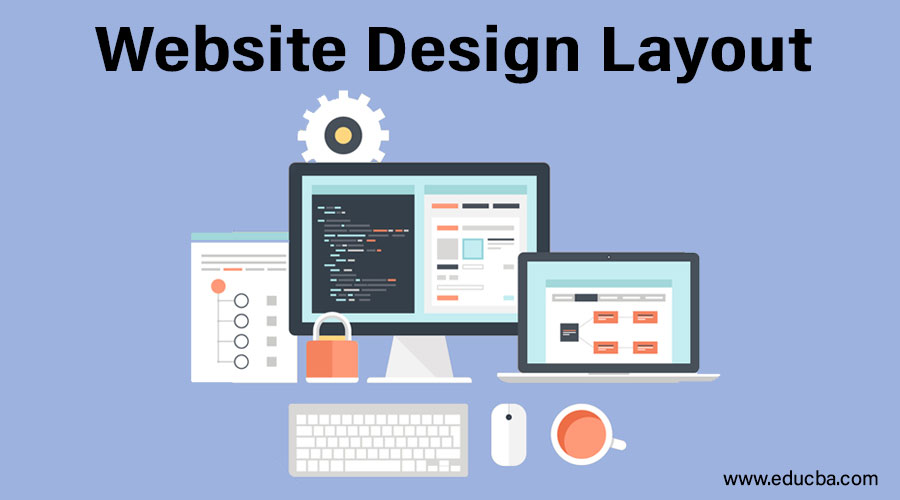Modern Site Layout That Catches Interest and Converts
In a progressively digital landscape, modern-day web site style has actually emerged as a pivotal aspect in capturing customer attention and driving conversions. As we explore these important parts, it ends up being clear that recognizing their interplay can considerably affect an internet site's efficiency and customer contentment.
Value of Visual Pecking Order
Aesthetic hierarchy is a vital component in web site style, as it overviews customers' interest and boosts their total experience. By tactically organizing web content, developers can guide users to the most important information first, therefore raising involvement and enhancing use.
Integrating a logical flow in content setup is essential; as an example, putting one of the most vital information on top of a page promotes instant acknowledgment. Moreover, constant use typography, such as varying font dimensions and styles, assists establish a clear content framework. This organization not just help in navigating however additionally develops depend on, as individuals feel a lot more comfortable when they can conveniently find what they are searching for.
Inevitably, a well-executed visual pecking order not just boosts visual allure however likewise significantly impacts user habits. By focusing on important components and ensuring a seamless experience, developers can efficiently convert site visitors right into consumers, strengthening the value of this foundational style concept in modern-day website growth.
Responsive Design for All Tools
Producing a seamless experience across numerous tools is essential in today's digital landscape, where individuals accessibility web sites from smartphones, tablet computers, and desktop computers alike. Responsive layout is an essential method that ensures internet sites adjust fluidly to different screen dimensions, resolutions, and alignments. By utilizing versatile grids, pictures, and CSS media questions, developers can develop formats that keep visual honesty and performance, no matter the gadget being utilized.
The relevance of responsive layout prolongs past visual appeals; it directly influences customer involvement and conversion rates. An internet site that functions well on all tools encourages longer brows through and decreases bounce prices, as individuals are more probable to communicate with web content that is simple to navigate. Furthermore, online search engine, especially Google, prioritize mobile-friendly sites in their rankings, making receptive layout an essential element of seo (SEARCH ENGINE OPTIMIZATION)
Integrating responsive layout not only improves individual experience however additionally improves the development procedure. By developing a single website that functions across tools, organizations can save time and resources contrasted to developing different mobile and desktop computer versions. Eventually, receptive design is an essential strategy for modern-day website layout, making certain availability and satisfaction for all customers, regardless of their device.
Involving Interactive Components
While a responsive design prepares for a useful site, incorporating appealing interactive components is critical for capturing individual attention and cultivating much deeper links. Website Design. Interactive aspects, such as animations, tests, and clickable infographics, develop an extra vibrant user experience, encouraging site visitors to spend even more time on the site
Incorporating interactive attributes can likewise direct users via complicated details, making it much easier to digest material. Interactive sliders can show product variants, while ingrained video clips can give demonstrations or testimonies that resonate more than static photos or text. In addition, gamification strategies, like benefits for finishing jobs or engaging with web content, can enhance customer motivation and retention.
Reliable use of interactive elements not just enhances the individual experience but can also lead to greater conversion prices. It is crucial to stabilize interactivity with performance; overly complex features may hinder website rate, negatively influencing user fulfillment.
Structured Navigating Practices
Efficient navigation is a keystone of any kind of successful web site, as it straight influences individual experience and content accessibility. Structured navigating techniques make certain that customers can conveniently locate info, improving their communication with the site. A well-structured navigating menu should be easy and user-friendly, typically featuring a minimal variety of main categories to stay clear of additional info frustrating site visitors.
To achieve streamlined navigating, designers need to focus on a hierarchical structure that rationally organizes web navigate to this website content. Implementing breadcrumb tracks can offer customers with context concerning their current location within the site, enabling smooth backtracking. In addition, utilizing drop-down food selections can successfully preserve area while still giving accessibility to subcategories.
Receptive design is crucial, as navigating ought to be functional throughout all devices (Website Design). Mobile individuals, specifically, take advantage of touch-friendly food selections and retractable sections that keep usability without jeopardizing visual appeals

Effective Call-to-Action Methods
A well-crafted call-to-action (CTA) is crucial for directing individuals towards desired outcomes on a web site, as it motivates them to engage with material or purchase. To maximize their efficiency, CTAs must be clear, compelling, and strategically positioned review throughout the website.
First, use action-oriented language that connects seriousness or worth, such as "Start," "Join Now," or "Claim Your Price cut." This language not just motivates users yet likewise sets clear expectations regarding the next actions.
Second, consider layout components; CTAs must stick out aesthetically via contrasting colors, sufficient whitespace, and prominent positioning. A button that is very easy to see and click increases the possibility of individual communication.
Additionally, individualizing CTAs based upon user behavior or demographics can substantially improve engagement. Tailored messages resonate a lot more with individuals, driving higher conversion rates.

Final Thought
To conclude, modern site design highlights the integration of aesthetic pecking order, responsive formats, involving interactive components, streamlined navigation, and efficient call-to-action methods. These elements jointly enhance customer experience, making certain that site visitors remain engaged and encouraged to discover content further. By focusing on these design concepts, services can significantly improve individual retention and conversion rates, inevitably bring about higher success in the electronic landscape. The constant development of website design underscores its crucial role in effective online interaction and marketing.
In a significantly digital landscape, contemporary site design has actually emerged as an essential factor in catching individual interest and driving conversions.Aesthetic hierarchy is a crucial aspect in site design, as it guides customers' focus and boosts their overall experience.The relevance of receptive layout expands past visual appeals; it directly influences customer interaction and conversion rates.Including receptive design not just improves customer experience however also improves the growth process. Ultimately, responsive layout is a fundamental approach for contemporary internet site design, ensuring availability and fulfillment for all users, no matter of their tool.
Comments on “Website Design for Small Businesses: Affordable Solutions for Success”